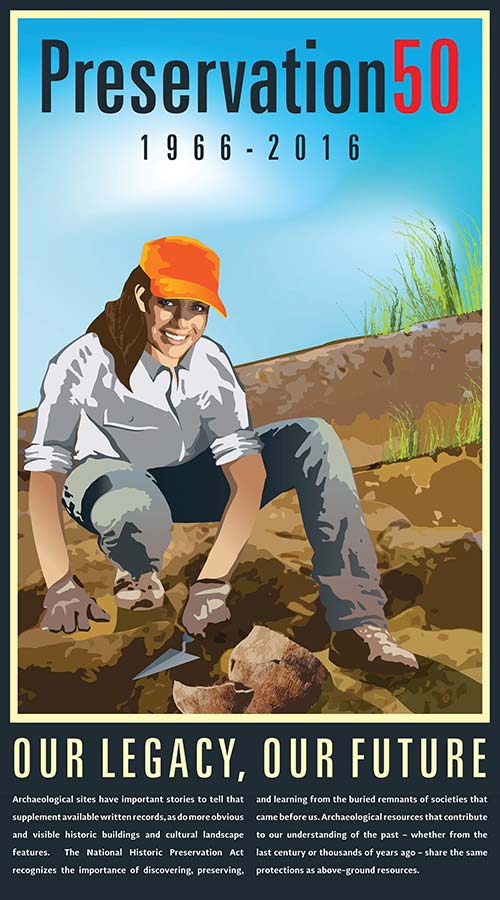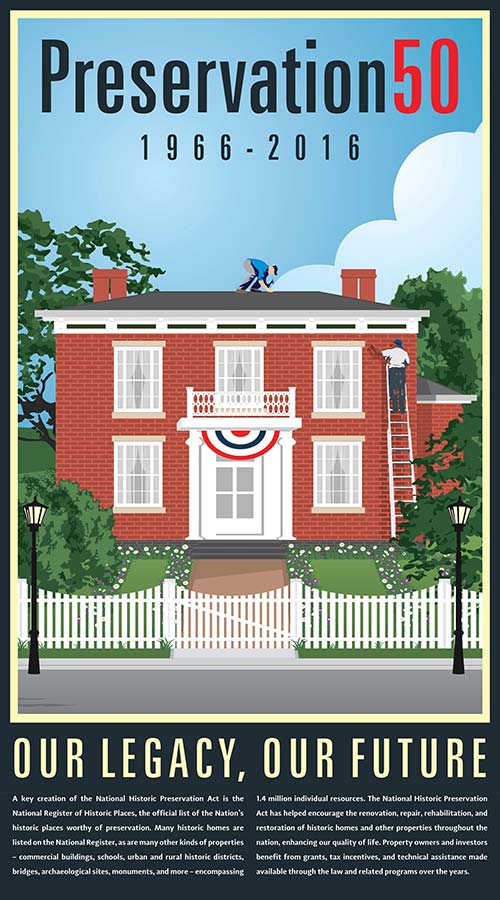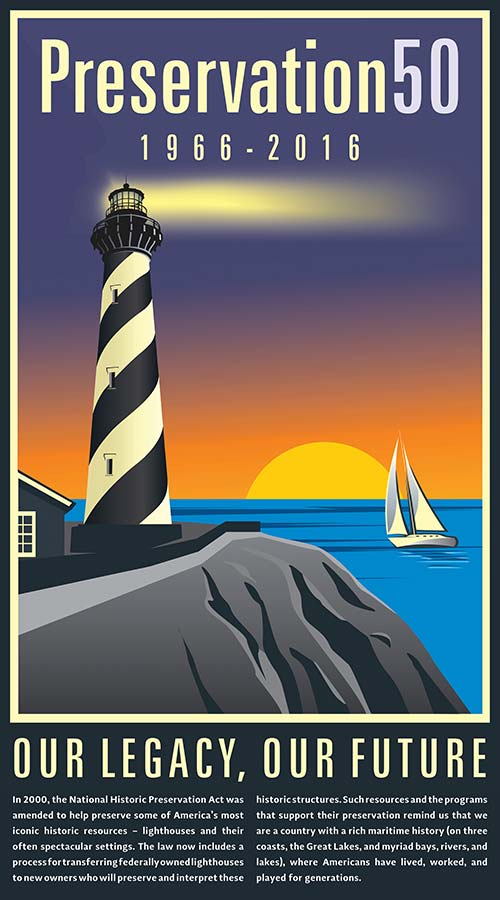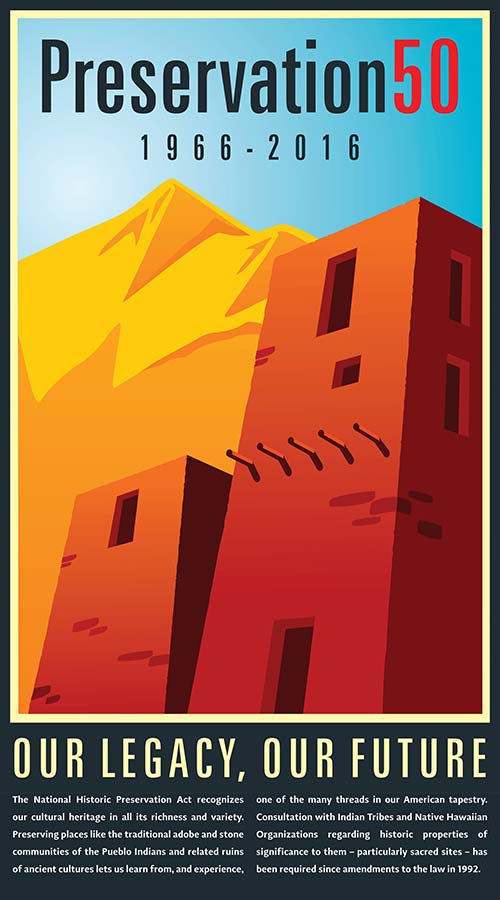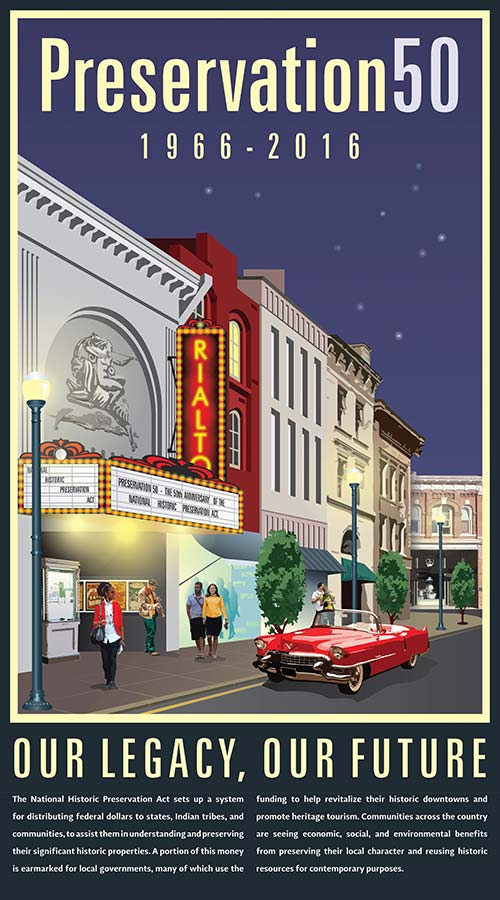By Greg Werkheiser
During 2016 the United States is commemorating the fiftieth anniversary of the federal historic preservation program, created when President Lyndon B. Johnson signed the National Historic Preservation Act (NHPA) into law. This year-long celebration has been dubbed Preservation50. It has united an unprecedented coalition of citizens who care about preservation and community to take stock of the past fifty years of preservation lessons and look towards shaping the next half decade.
There is a surprisingly close association between American presidents and historic preservation. Thomas Jefferson is often called the Father of American Archaeology for his excavation of Indian mounds at Monticello in 1782, and his home and the University of Virginia that he founded are now World Heritage Sites.
In 1858 George Washington’s home at Mount Vernon was the site of the first national preservation effort when the Mount Vernon Ladies Association formed in response to the estate’s poor condition. South Carolina socialite, Louise Dalton Bird Cunningham, traveling up the Potomac by steamer, was horrified by the neglect and approaching destruction of Mount Vernon, and wrote, “If the men of America have seen fit to allow the home of its most respected hero to go to ruin, why can’t the women of America band together to save it?”
The influence of American presidents on the nation’s historic treasures has been felt since that time, particularly after Theodore Roosevelt signed the 1906 Antiquities Act into law. This legislation protected the archaeological relics in the West that recalled the thriving cultures of the first Americans, like the cliff dwellings of Colorado, Utah, and Arizona. It also allowed presidents to create National Monuments to protect places as diverse and significant to our past as Fort McHenry, Harriet Tubman’s Underground Railroad, and Cesar Chavez’s Forty Acres. TR’s distant cousin FDR went on to sign the Historic Sites Act of 1935, which established the National Historic Landmarks program and the Historic American Building Survey.
By far the greatest impact on America’s historic and cultural resources, however, came with the 1966 passage of the NHPA.
Birth of the Federal Historic Preservation Program
The NHPA was a response to the well-intentioned but destructive effects of federal programs like urban renewal and the interstate highway system. It created a National Register of Historic Places, and historic preservation offices in every state.
It also established a process for reviewing projects that involve federal money, land, or permits to ensure their impacts on historic buildings, sites, districts, structures, and objects are considered and addressed. In most cases, agreements are reached to lessen the impacts or even positively benefit affected historic and cultural resources.
For the first time, a program was in place to comprehensively identify, evaluate, protect, and enhance the Nation’s rich cultural heritage. In practice, the effect of this legislation cannot be overstated.
Today the National Register of Historic Places includes more than 1.7 million resources in more than 89,000 listings. Federal consultation about the impacts to historic sites happens approximately 140,000 times a year. Over 2,100 historic districts provide dynamic places for people to live and work. Millions of visitors from around the world enjoy iconic places such as Frank Lloyd Wright’s Fallingwater in Pennsylvania, the French Quarter of New Orleans, prehistoric effigy mounds in Iowa, the Alamo in San Antonio, the Spanish missions of California, Martin Luther King, Jr.’s church in Atlanta, and the Iolani Palace in Honolulu.
The American people took the NHPA’s call to action to heart in the last half-century, transforming their neighborhoods from coast to coast and generating widespread economic and social impacts. Countless studies show that the NHPA helps stabilize neighborhoods and downtowns, contributes to public education and public health, attracts investment, creates jobs, generates tax revenues, supports small business and affordable housing, combats blight and powers America’s heritage tourism industry. Historic places, from private homes to community landmarks to archaeological sites to historic military bases and national parks, also maintain community pride and identity, and aid local and regional economies through their operation and maintenance.
Greg Werkheiser is a founding partner of the law and policy firm Cultural Heritage Partners, PLLC, which is managing the Preservation50 initiative. Adapted from The Huffington Post.


